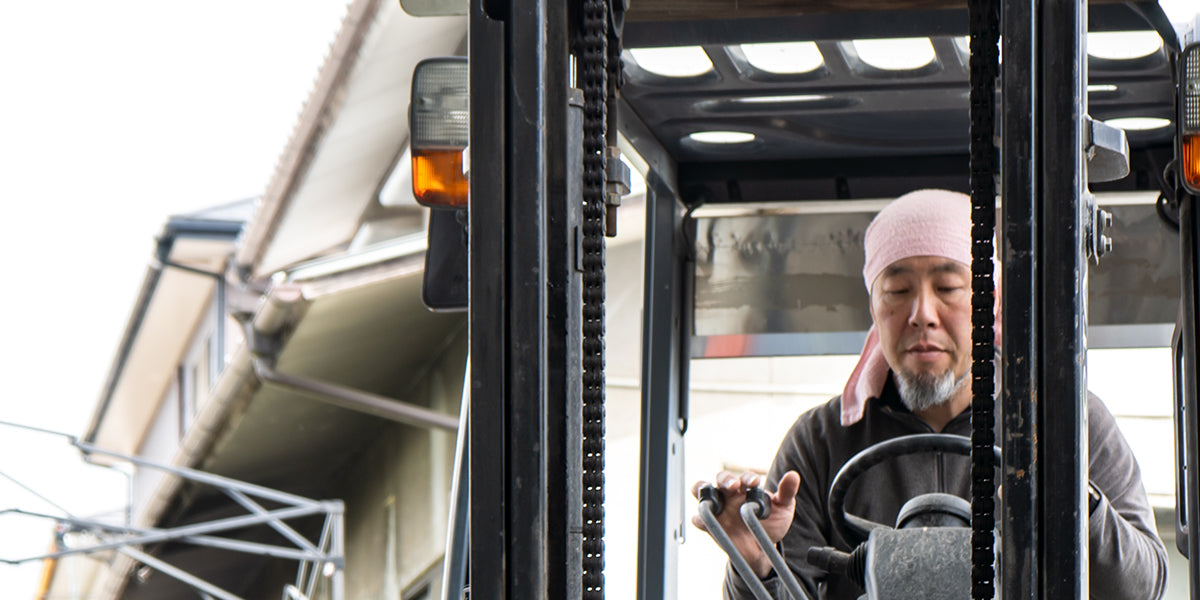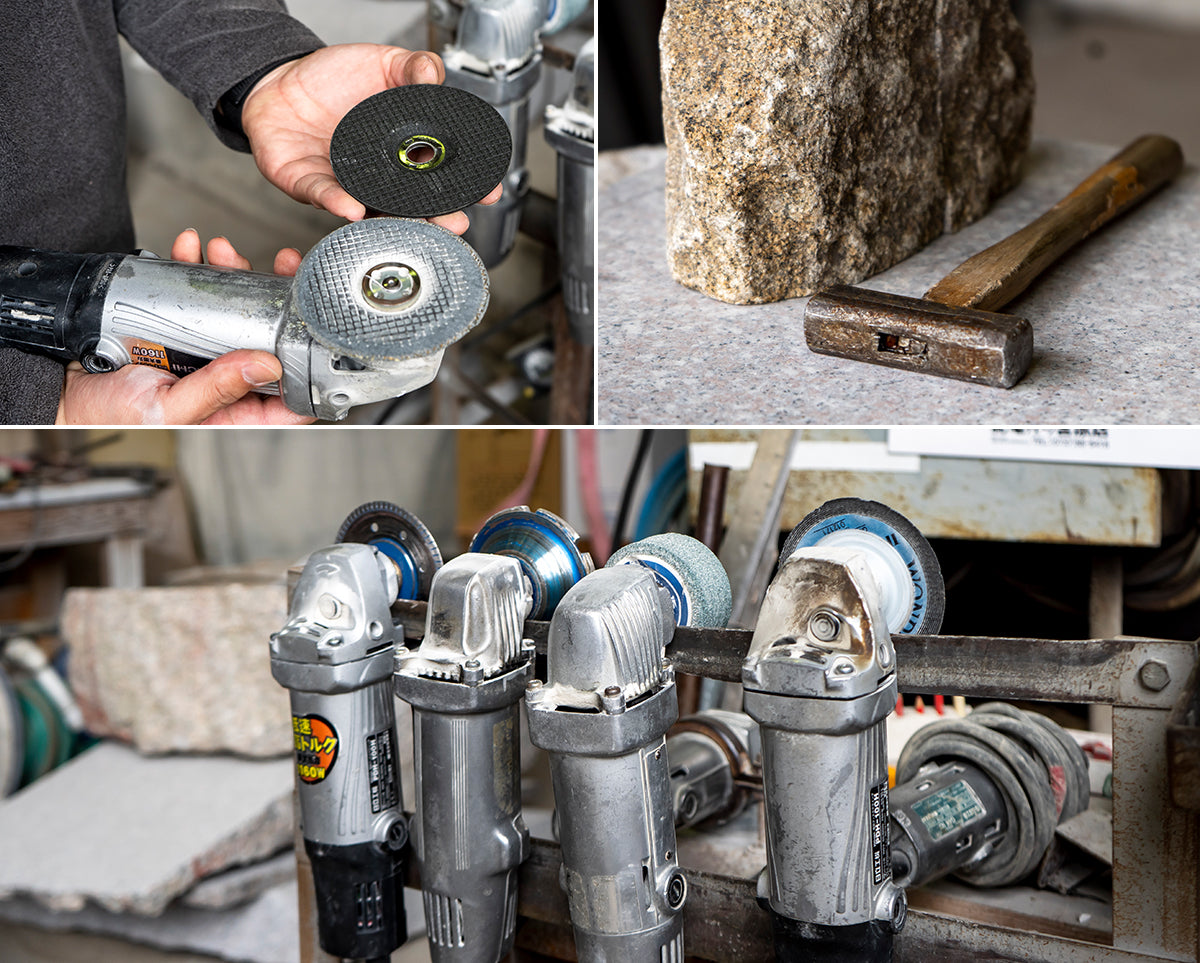
I have taken over the ROCK END project from my predecessor.
- How did the product ROCK END come about?
-
Shimamoto-san
ROCK END was created by my father, the previous owner, together with a designer, so I don't know the details of what happened back then. I remember that my father stayed behind to work on the tombstones after he had finished his work.
My father had a work called "CLIMB". It was a piece where a string was hung from a rock in the shape of a mountain, like ROCK END, and dolls were attached to the end of the string... and the dolls were climbing the mountain... I'm not sure if this was before or after ROCK END, but it seems my father had the idea to make something using natural rocks that look like mountains. I've taken over that idea and am making it now... that's how it is.
- How is ROCK END created?
-
Shimamoto-san
The stones to be used must meet certain criteria, such as size, shape, and whether or not they are scratched, so first of all, it takes time to select the stones. And the larger the size, the more difficult it becomes.
I search for stones in the mountains at the quarry, but I don't pick up each one by hand, I look around and look for a good looking stone. There's a scene in the very beginning of the Terminator movie where the Terminator comes from the future completely naked and scans his jacket, belt, shoes, etc. to see if they fit him. I look at the piles of stones with that kind of image in mind (laughs). Now, if I find a stone and hold it in my hand, I can pretty much tell if it can be used in a product or not.
But there are also cases where the stone is no good after we bring it home. There are scratches that were not visible at the quarry. "Oh? There was a scratch here." That's why it's even more important to look carefully at the quarry, and when we go to the quarry, an hour passes in the blink of an eye.

- I see. The process seems simple, but...
-
Shimamoto-san
The first step in processing the rock end is to cut out the "seat" (the bottom part). Looking at the shape and curvature of each stone, I think about what the finished product will look like, imagining what it will look like, like "Should I use this one, or maybe this one is prettier. So this should be the top of the mountain..."
After cutting the "seat," it is cut into a right and left piece, but even if a stone is 5 sun wide, for example, if it is cut to exactly 2.5 sun, it may not look good.
All of them, one by one...carefully. I set up the machine, put it down, cut, put it down again, cut...it's not like I do it one after the other. - As a creator, is there anything you would like people to pay attention to in ROCK END?
-
Shimamoto-san
Recently, I have become particularly particular about the "seat". The "seat" is ground first, so the stone has no flat surface and the blade is cut into a wobbly, unstable position. Of course, it is fixed in place, but it does move slightly.
When that happens, it makes a rattling noise when you place it down. Eventually, cushioning material is added to the bottom, which absorbs the noise to a certain extent, but even without the cushioning material, it still won't rattle... Also, we adjust the cutting surfaces until they are perfectly flat so that there are no gaps when the two stones are placed together.We check each side of the ROCK END, looking for any unevenness, using a grinder to remove the stone dust and checking...we repeat this process, and when one side is OK, we adjust the other side in the same way...then we put the two together and adjust again if there are any gaps...and when we fit them together we say, "Yes, it's fine."
It takes time, but the end result is beautiful.
This may not be something people notice when they pick up the finished product, but it is something we pay careful attention to.

(Top left photo) Grinder used for paper finishing (bottom photo) Four different types of grinders are used for processing ROCK END.
In the second half, he answers a wide range of questions, including about Aji stone and essential items for work!
Kenichiro Shimamoto
Born May 18, 1975 (47 years old at the time of the interview)
- The fourth generation owner of Shimamoto Stoneworks Ltd.
- In 1919, the family business, a restaurant, was converted into a stonework business. This stonework shop has a history of over 100 years, and in addition to manufacturing gravestones, it also handles construction and the production of stone lanterns and other crafts.
- AJI PROJECT products I am in charge of
- ROCK END / MON / MIRROR by BP. (Base)
- Private
- She was in the theater industry, but took over the family business after getting married.
